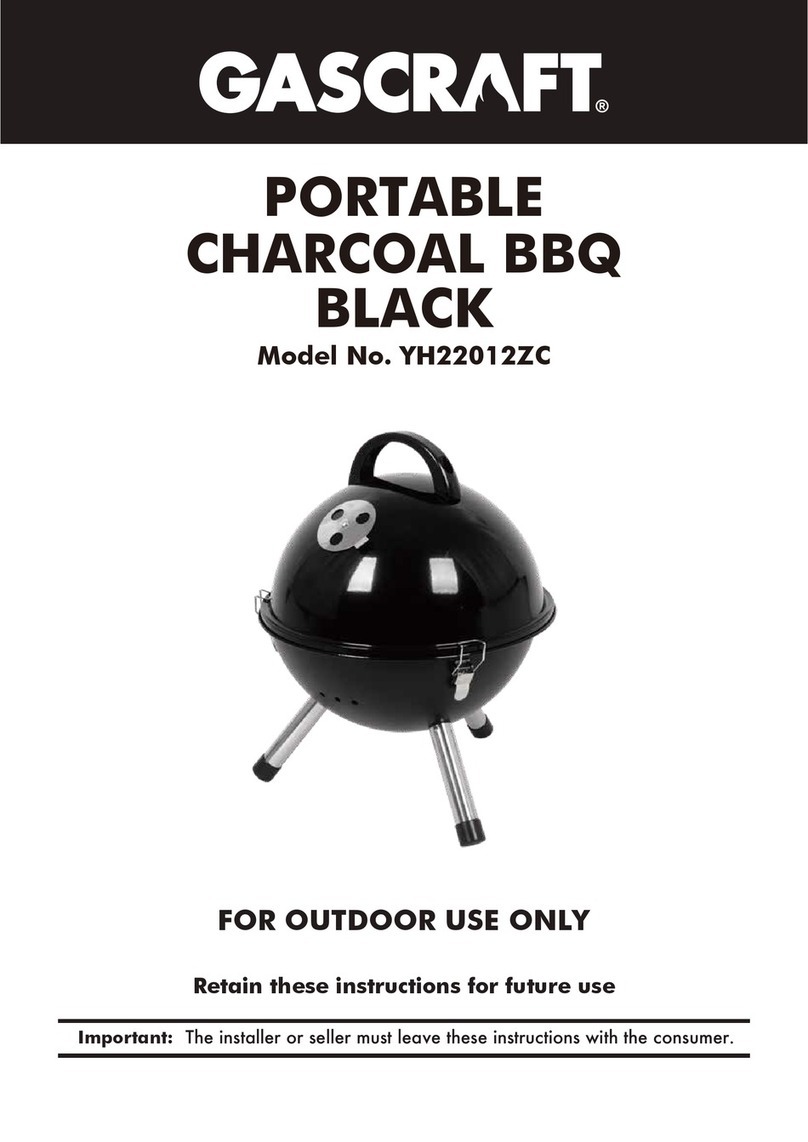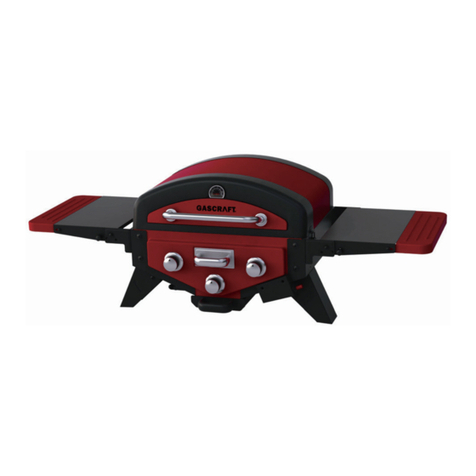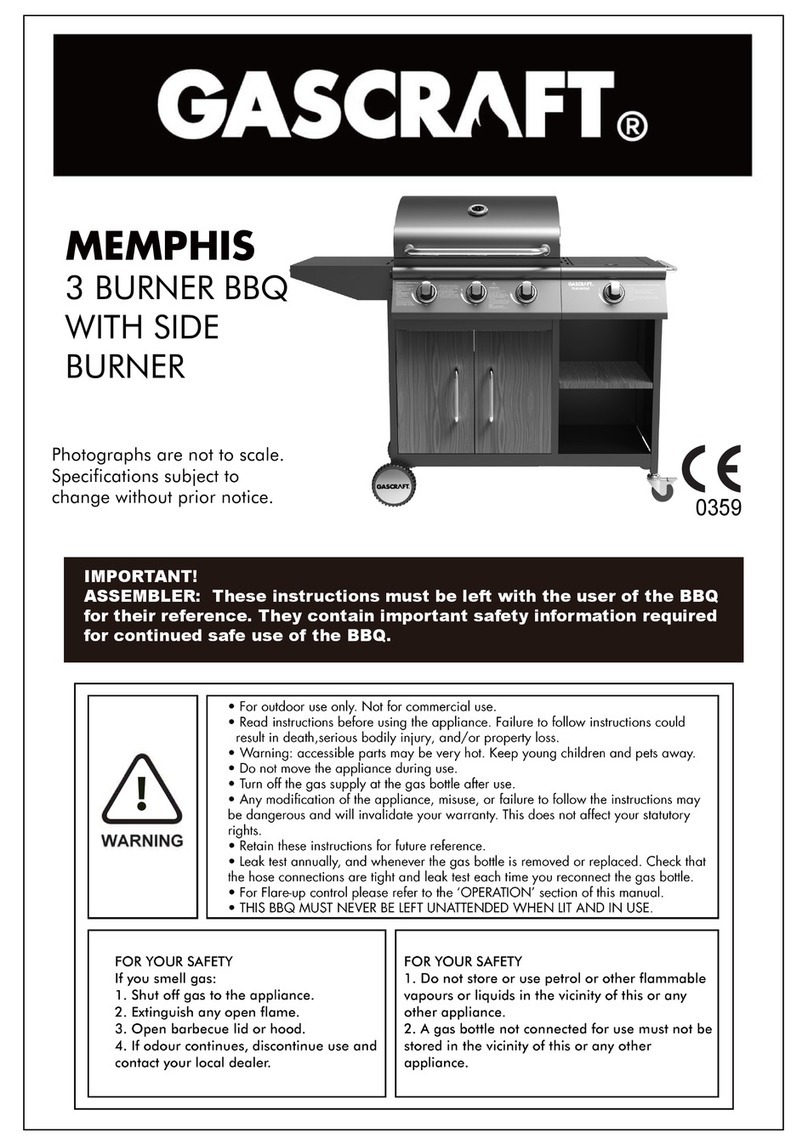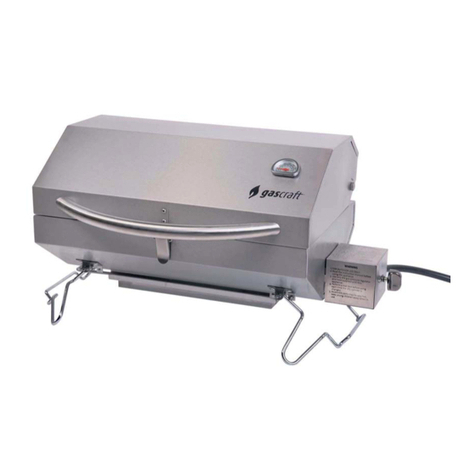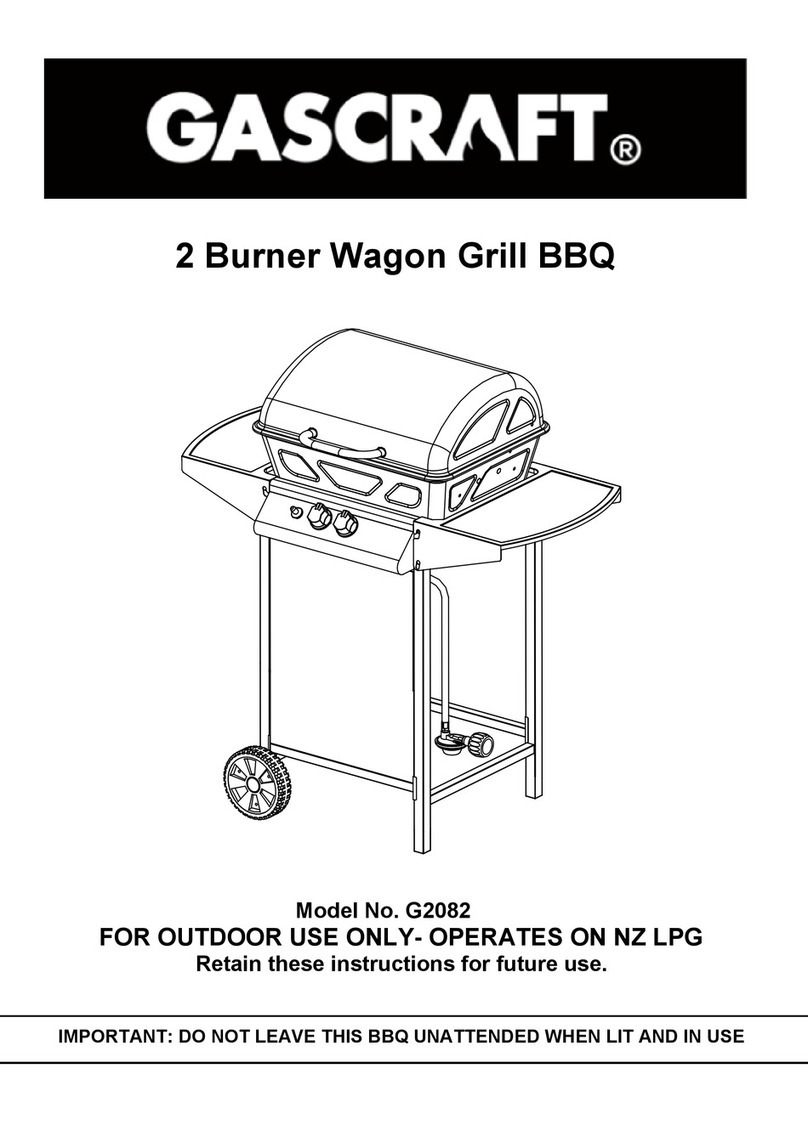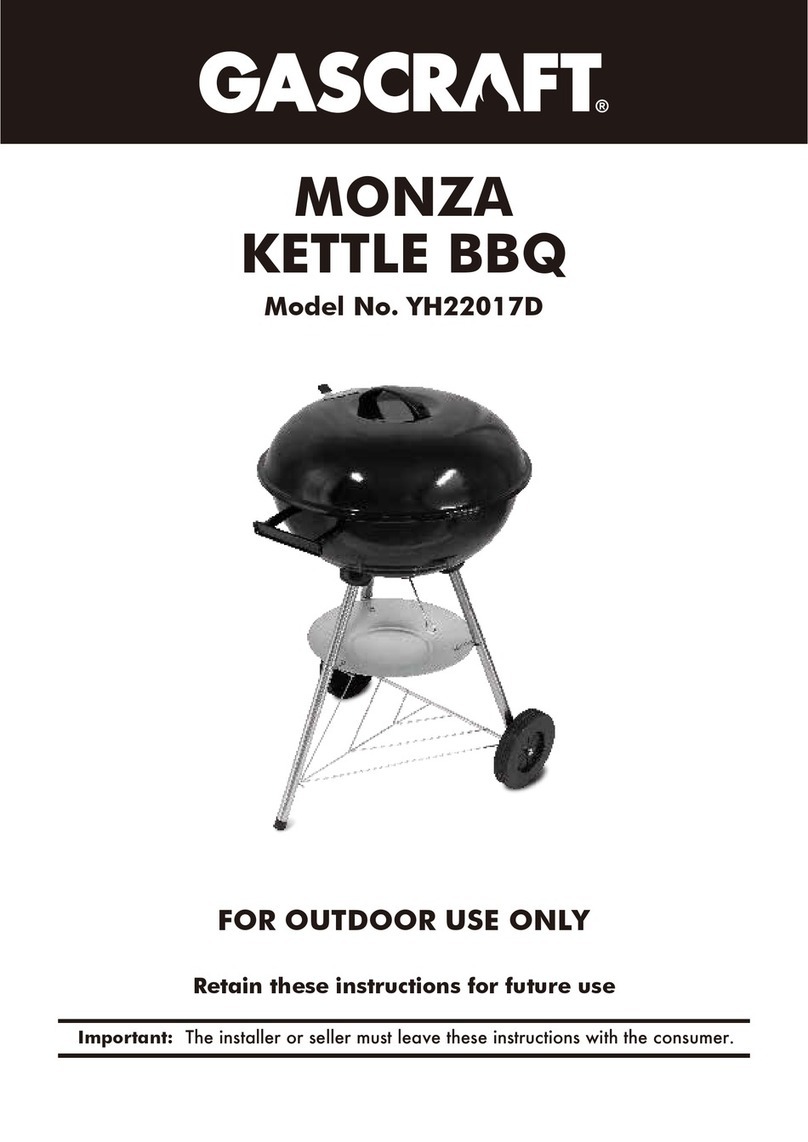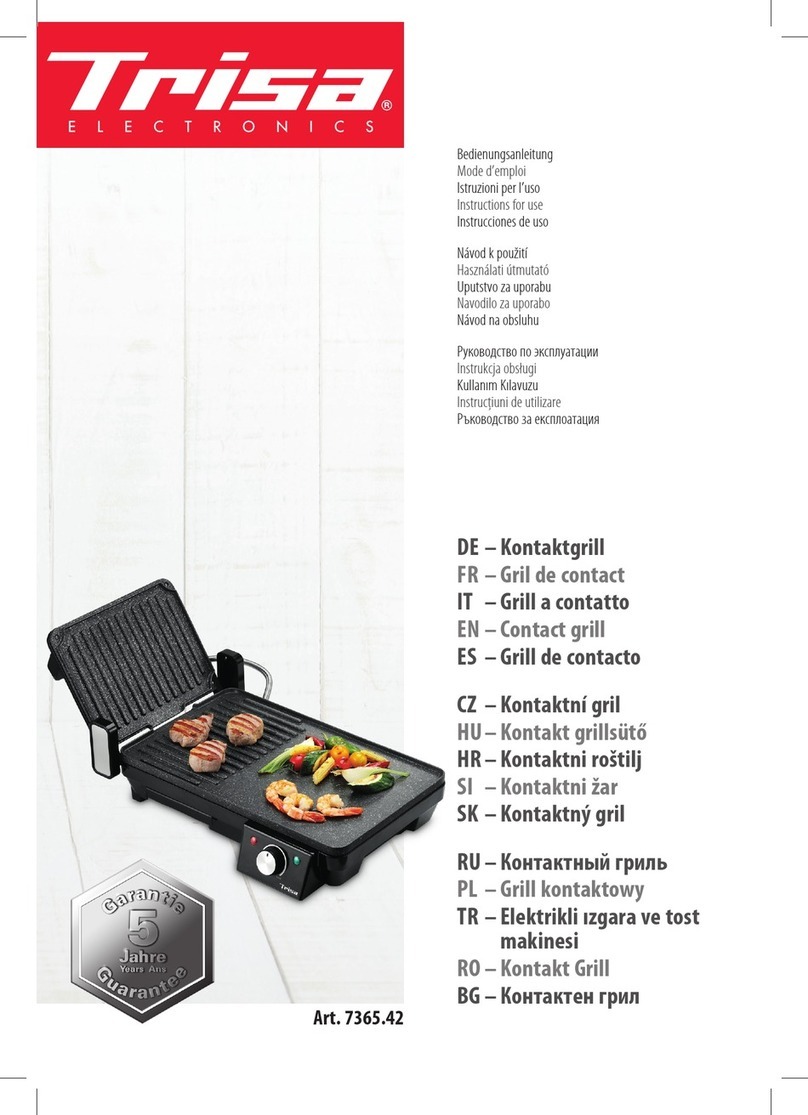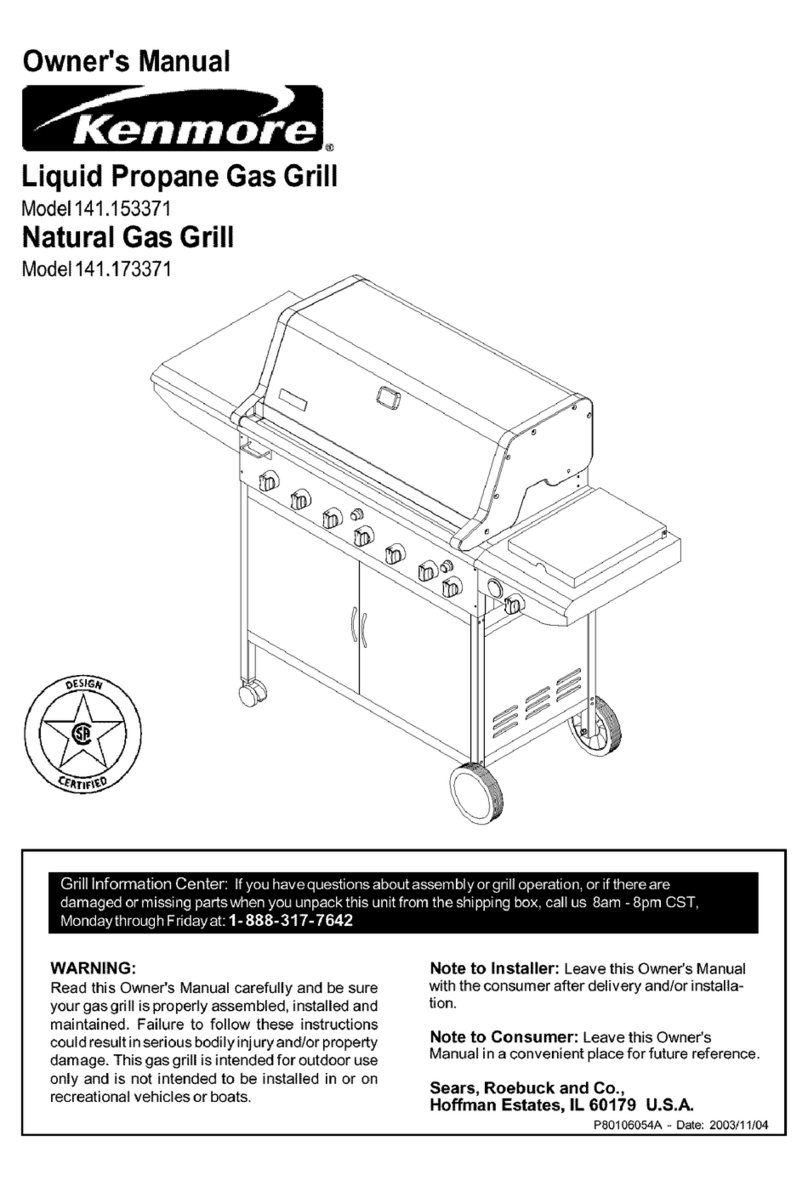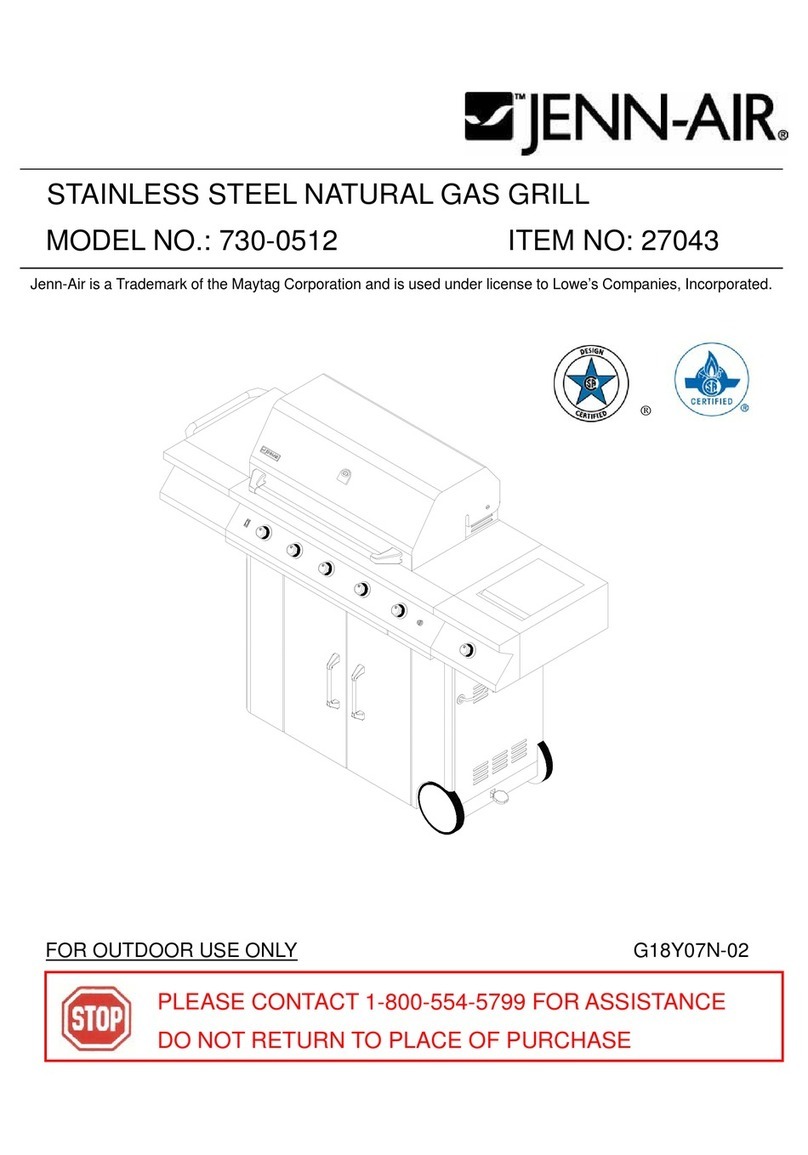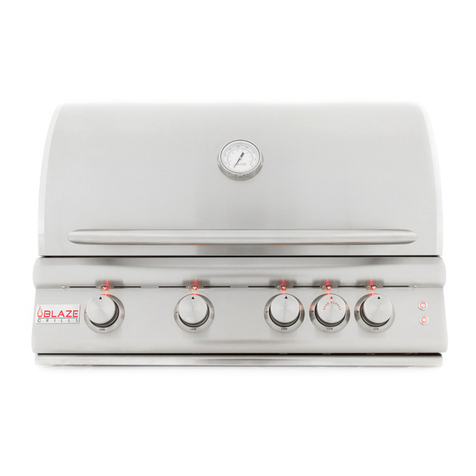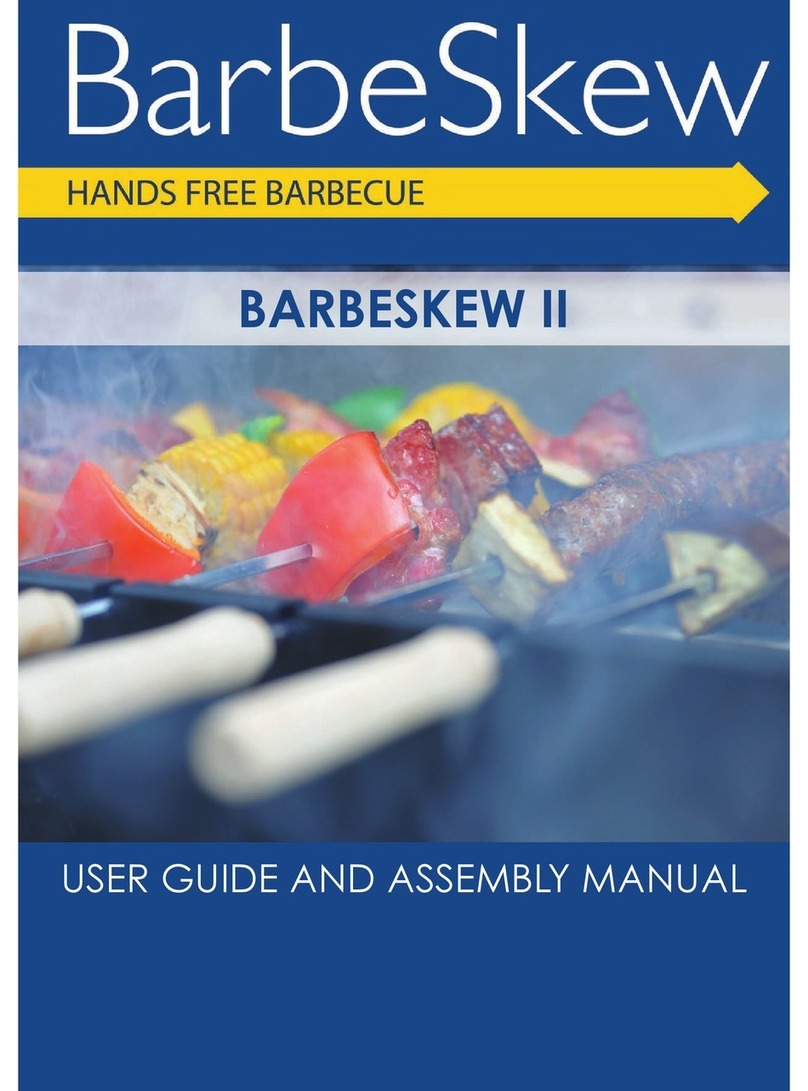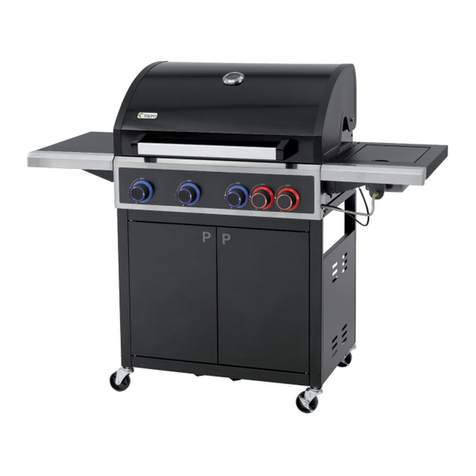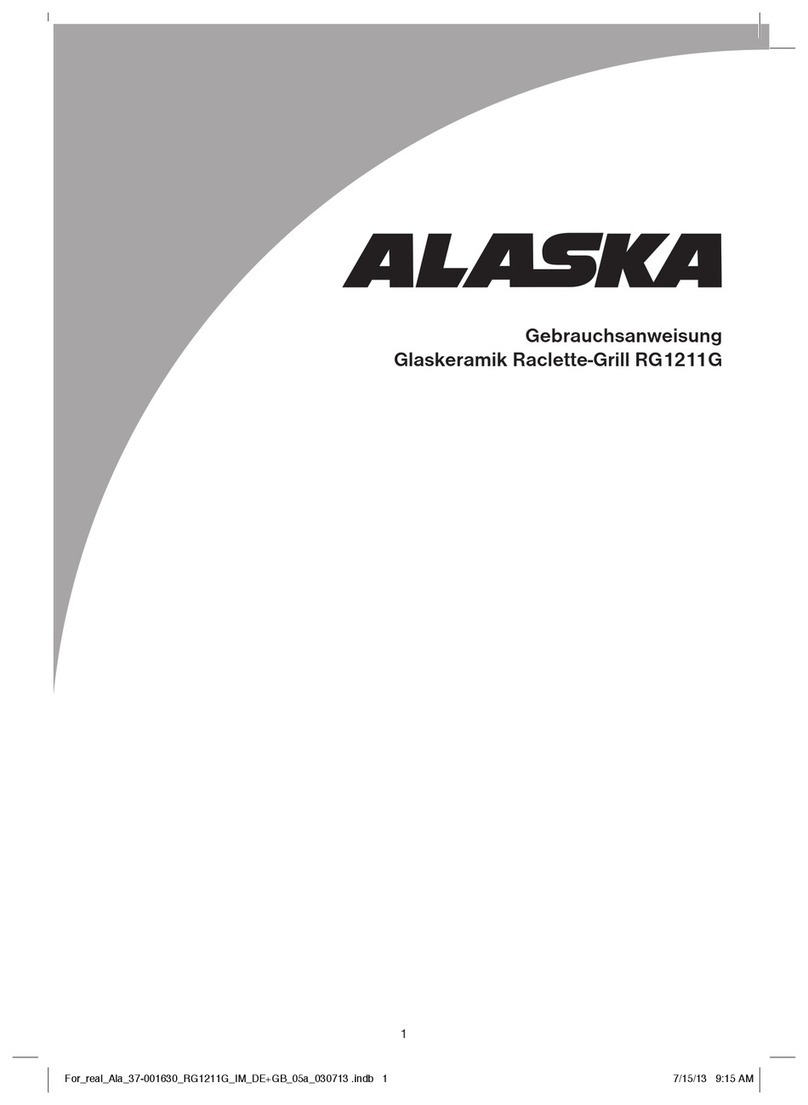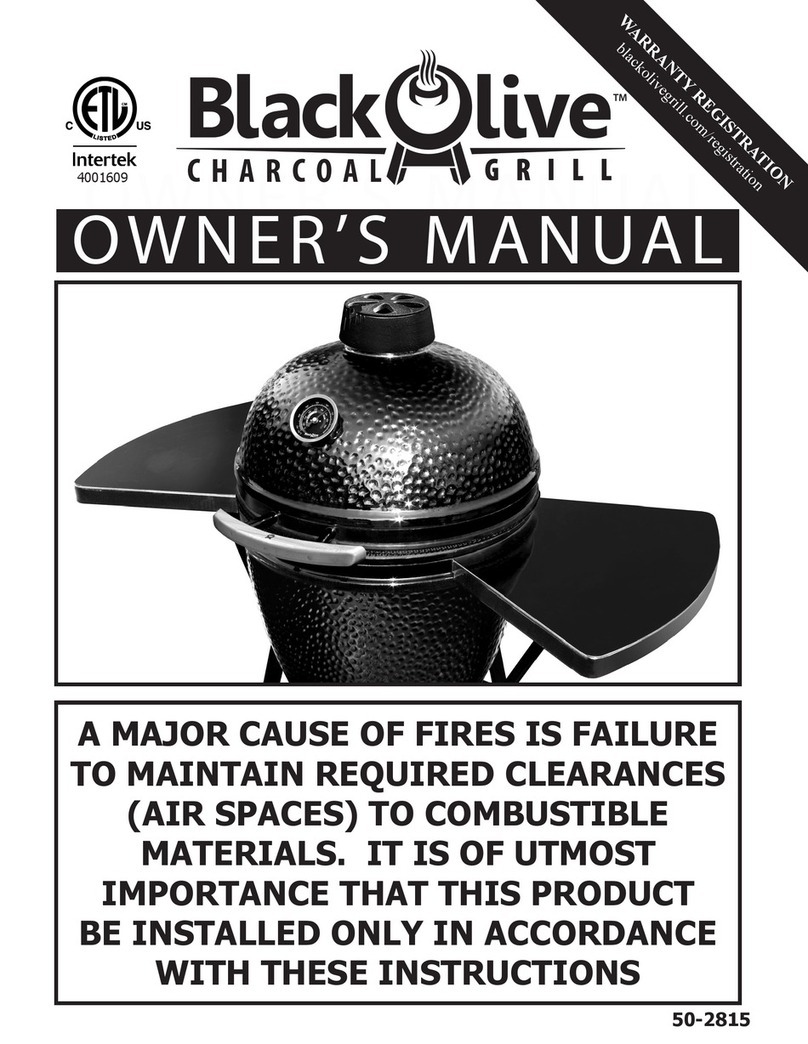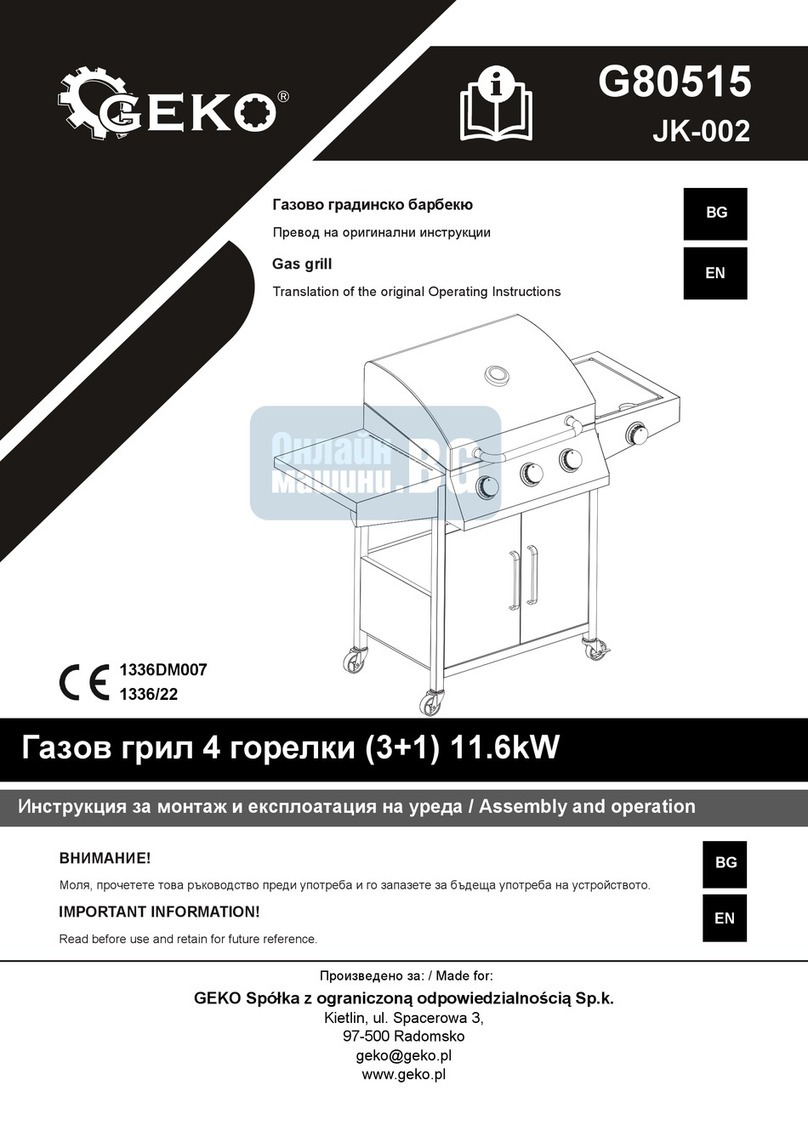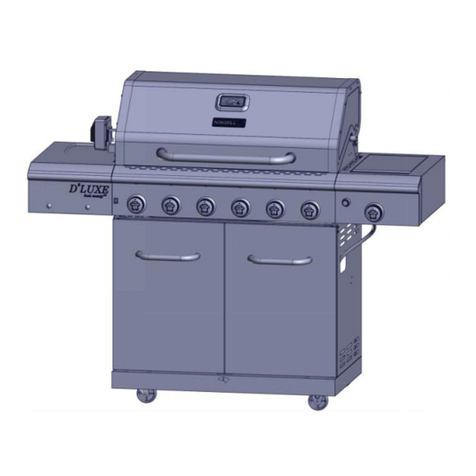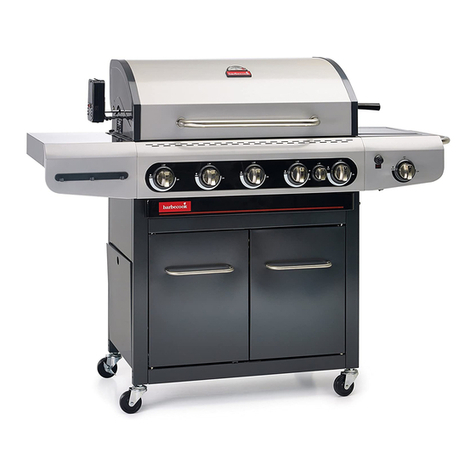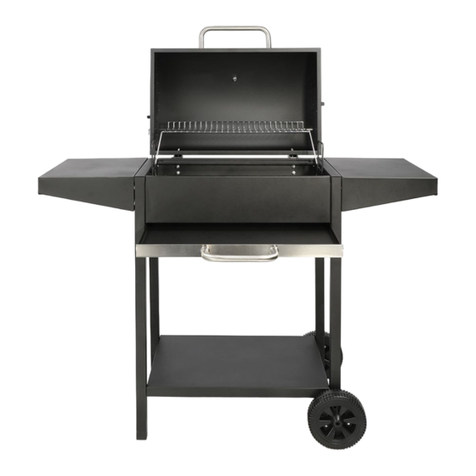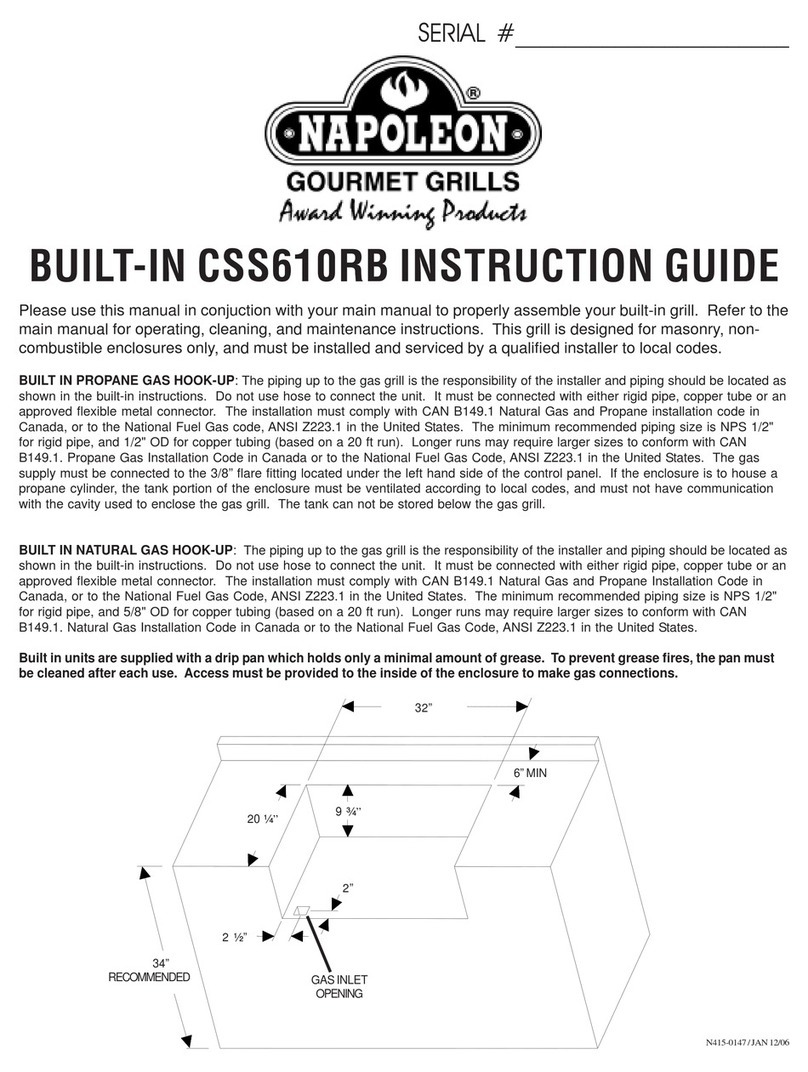19
Lighting the Side Burner
Push and turn the side burner control knob anti-
clockwise to the high position. Push the ignitor
button rapidly until the side burner ignites. If the
side burner fails to ignite, turn the control knob
to the OFF position and wait five inutes before
atte pting to re-light following the above
procedure. If the side burner still fails to ignite,
turn the control knob off, wait five inutes and
light with a atch.
When using the side-burner, care should be
taken to ensure that pots and pans are central
and flat on the side-burner grid.
Grill Cooking
The burners heat up the fla e ta er
underneath the grill, which in turn heats the food
on the grill. The natural food juices produced
during cooking fall onto the fla e ta er below
and vaporise. The subsequent rising s oke
bastes the food, as it travels upwards, i parting
that unique barbecued flavour.
Roasting Hood Cooking
Barbecues equipped with a roasting hood give
the option to for an ‘oven’ for roasting or
baking food, such as joints of eat or whole
chickens, etc. More even cooking of food will
actually be achieved by using the barbecue with
the hood down. However, this should only be
done with the burners on low
For best results, place the food you wish to bake
or roast on a etal baking tray and set it on one
side of the cooking grill.
When roasting, turn the burner to a LOW to
MEDIUM position.
Close the hood to cook the food ‘indirectly’.
Avoid lifting the hood unnecessarily as heat is
lost every ti e the hood is opened. If the hood
is opened during cooking please allow extra
ti e for the barbecue to regain its te perature
and co plete the cooking.
If the internal heat beco es too high, turn the
burners down to the low position. It is not
necessary or advisable to have all of the
burners on high when the hood is closed.
DO NOT ALLOW YOUR BARBECUE TO
OVERHEAT. Take care when opening the hood
as hot stea can be released on opening.
Warming Rack
War ing racks are a convenient way to keep
cooked food war or to war ite s such as
bread rolls. It is advisable to place food
(particularly fatty foods) to the front of the
war ing rack to avoid the possibility of juices
and fat running down the back of your barbecue.
Always check that your war ing rack is properly
fitted before use.
Flare-Up Control
Flare-ups occur when eat is barbecued, and
the fat and juices fall upon the hot fla e ta er.
S oke of course helps give food its barbecued
flavour, but it is best to avoid excessive flare-up
to prevent food being burned. To control flare-
ups, it is ABSOLUTELY ESSENTIAL to tri
away excess fat fro eat and poultry before
grilling, use cooking sauces and arinades
sparingly and try to avoid very cheap cuts of
eat or eat products as these tend to have a
high fat and water content. Also, the burners
should always be placed on the low setting
during cooking.
When flare-ups do occur, they can usually be
extinguished by applying baking soda or salt
directly onto the fla e ta er. Always protect
your hands when handling anything near the
cooking surface of the barbecue and take care
to protect yourself fro the fla es.
If a fat fire occurs, please see the instructions
given below.
Fat Fires
E pty and clean the grease cup of food debris
after each cooking session. If the barbecue is to
be used for large gatherings, it will be necessary
to turn off and cool the barbecue every two
hours to re ove food debris fro the grease
cup and clean it out. The ti e between cleaning
ay need to be reduced if very fatty foods or
cheap eat products are being cooked. Failure
to do this ay result in a fat fire, which ay
cause injury and could seriously da age the
barbecue.
8
In the event of a fat fire:
•
If safe to do so, turn all control knobs to the
‘off’ position.
•
Turn off the gas supply at the gas bottle.
•
Keep everyone at a safe distance fro the
barbecue and wait until the fire has burnt
out.
•
Do not close the hood or lid of the barbecue.
•
NEVER DOUSE A BARBECUE WITH
WATER. IF AN EXTINGUISHER IS USED,




















